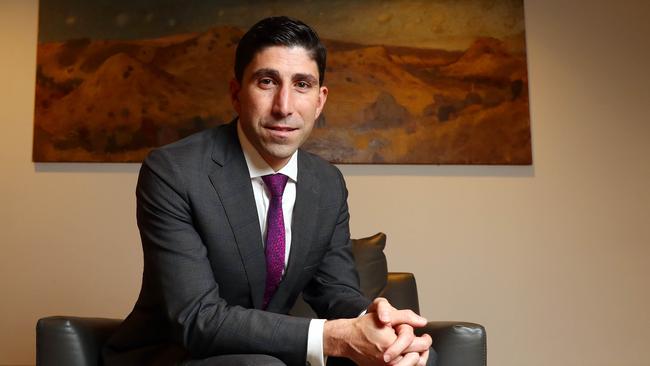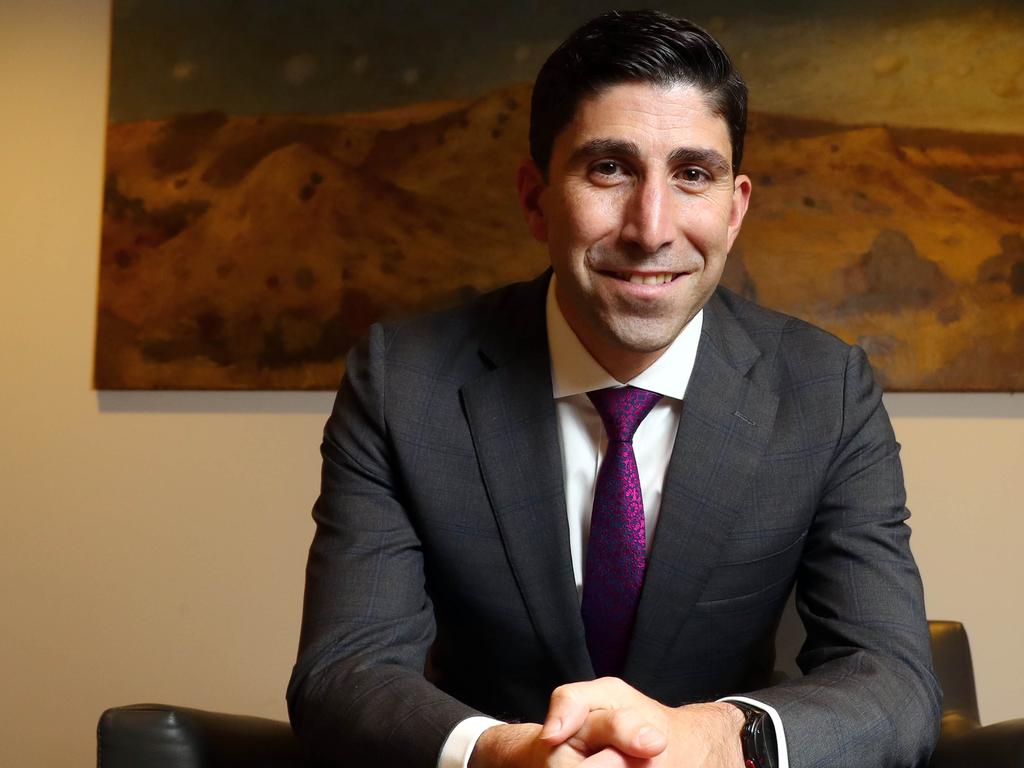IOOF sticks to transformation plan as half-year profit slumps
IOOF has reported a 39 per cent drop in interim underlying profit, as it attempts to reshape itself to be ‘fit for purpose’.

IOOF chief executive Renato Mota has vowed the wealth group’s transformation “is not done”, as he reported a drop in interim profit due to regulatory change, competition and lower income linked to completing the purchase of ANZ’s pensions unit.
Mr Mota also used the results to tell investors the Australian Securities and Investments Commission had informed IOOF it wasn’t taking any action on a referral made to the regulator by the Hayne royal commission. IOOF does, though, remain subject to licence conditions imposed by the banking regulator and has another round of milestones to meet by June 30.
Mr Mota said he continued to focus on a transformation plan and simplifying the business.
“We want to capitalise on the transformation opportunity ahead,” he told The Australian.
“The job is not done. The transformation agenda ahead is a challenging one… we are not deluding ourselves.”
IOOF’s statutory profit fell 15 per cent to $115m for the six months ended December 31, compared to same period a year earlier.
Underlying profit fell 39 per cent to $61.4m in in the half, compared to the year earlier period, printing in line with revised guidance given early this month.
Underlying profit from continuing operations - excluding divestments of a holding in Ord Minnett, AET Corporate Trust and Perennial Value Management - fell by a similar amount.
Part of the decline in earnings stemmed from lower income from an ANZ debt note issued as part of IOOF’s acquisition of the bank’s pensions and investments business for a renegotiated lower price of $825m. Income from the note was $8.2m in the first-half down from $28.9m, pre-tax, in the same period a year earlier.
The Protecting Your Super legislation - aimed among other things at closing inactive accounts and stopping default insurance on inactive accounts - and other regulatory and legal reforms caused a $7.2m dent to IOOF’s earnings.
After falling as low as $6.66 in early trading on Tuesday, the stock recovered ground to finish steady at $7.04.
IOOF’s financial advice unit reported lower underlying earnings as its gross margins fell and some customers shifted to portfolio administration products. The investment management arm saw underlying earnings edge up, while the portfolio and estate administration division had lower earnings as margins across the investment platform sector compressed.
“Generally the issues in the industry are well known,” Investors Mutual senior portfolio manager Simon Conn said, referring to changes flowing through the financial advice sector after the Hayne royal commission and pressure on margins in the platform industry.
“It’s (IOOF) a business in transition.”
In the investment platform market, Mr Mota said against that backdrop of price cuts it was “critically important” to reduce the cost of the service as prices continued to fall.
On customer compensation, IOOF stuck to a prior estimate of $223m for remediation and program costs.
“The analysis has gone deep and wide… there has been no new systemic issue identified,” Mr Mota said of IOOF’s remediation analysis.
But the company is yet to start actually repaying the money, which it said would commence by June 30.
Revenue rose 4 per cent and IOOF had total net inflows of $1.4bn, in contrast to rival AMP which is still suffering from mammoth outflows.
IOOF had $145.7bn in funds under management, advice and supervision at December 31, up 5.2 per cent.
Operating expenses grew 9.5 per cent to $164.2m.
Another IOOF division acquired from ANZ, reflecting financial planner dealer groups, reported an underlying first-half loss.
Mr Mota said he wanted the former ANZ groups to be “economically viable”. He is targeting break-even for the ANZ groups in two-to-three years and is also planning a broader review of the group’s entire adviser network.
“Who stays and who goes is something we’ll address at that time,” Mr Mota added, referring to a June investor day.
IOOF is targeting annual cost synergies from the purchase of ANZ’s pensions and investments business of $68m, by mid-2023. Currently though, it is still paying the bank through a transactional services agreement as the business transitions over.
Mr Mota stressed the importance of IOOF having scale given at least one major domestic superannuation fund would likely be managing $500bn in five years time.






To join the conversation, please log in. Don't have an account? Register
Join the conversation, you are commenting as Logout